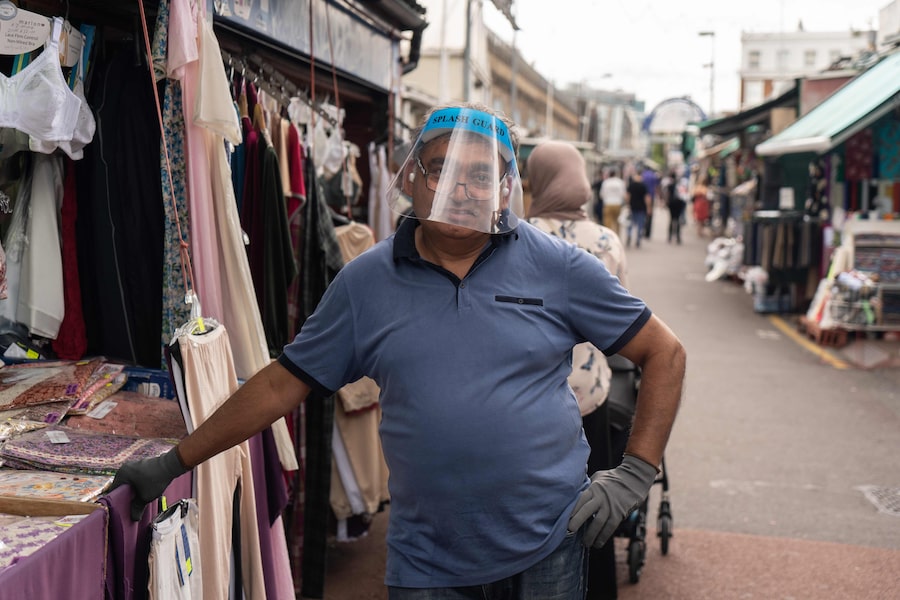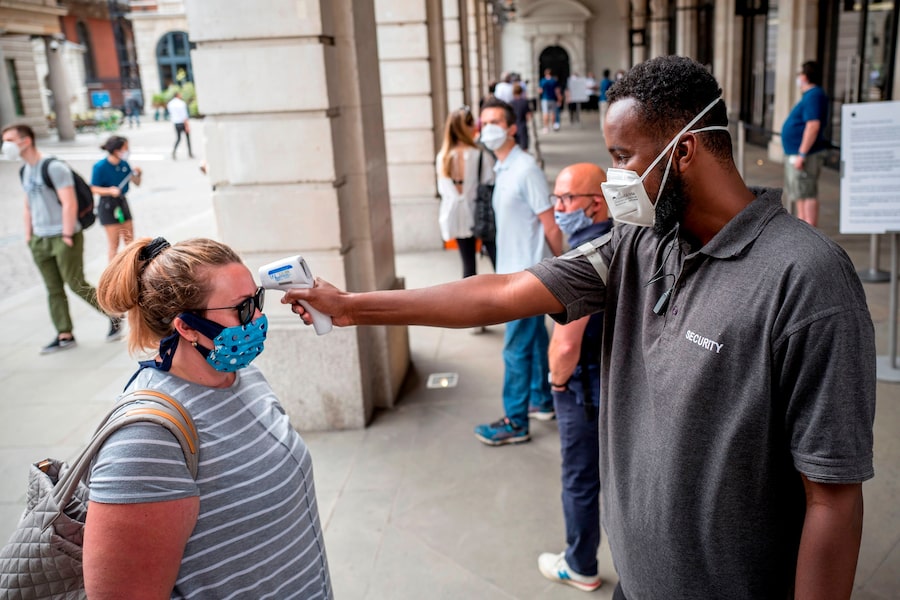
Travellers wearing protective face masks walk past information signs indicating the sanitary measures and rules at Brussels Airport, in Zaventem, Belgium, on June 15, 2020.BRUNO FAHY/AFP/Getty Images
Most European countries reopened their doors to continental travellers Monday in a massive but uneven effort to salvage what’s left of the summer tourist season and prevent the mass bankruptcy of hotels and restaurants.
But it’s not certain how many tourists will brave hopping on airplanes and trains to visit other countries.
Spain, hit hard by the COVID-19 crisis, will not reopen its borders until June 21, although it is allowing a few thousand German tourists into the Balearic Islands, which include Mallorca and Ibiza, for a trial run, without having to quarantine.
Denmark, which had relatively few coronavirus fatalities, remains highly cautious and is not allowing tourists from Sweden, which did not lock down its economy and has reported about 4,900 deaths. The Czech Republic is accepting visitors from Sweden, but only if they show that they’ve tested negative for COVID-19 upon their arrival or agree to go into quarantine.
Britain has pressed ahead with a two-week quarantine for international visitors, a move that will severely limit tourism and has angered tourist-dependent companies such as Ryanair, Europe’s biggest discount airline.
Italy, the first country to go into full lockdown, on March 9, was the European reopening pioneer. It opened its doors to the Schengen Area of 26 European countries, most of them members of the European Union, plus Britain on June 3. Travellers arriving from beyond those areas, including Canada and the United States, face two weeks of mandatory quarantine, and there are few transatlantic flights. Air Canada is due to relaunch direct flights to Rome from Toronto and Montreal on July 3.
But tourism is not bouncing back quickly in Italy or other EU countries.
At the Colosseum on Monday, only a few dozen visitors were waiting for their tours. The site is attracting only a few hundred tourists a day, even though it has been open since the start of June. On a normal summer day, the Colosseum would see 20,000 visitors – four million a year – with wait times of a couple of hours or more.
Visitors to the amphitheatre must reserve online, wear masks, undergo a temperature scan and respect the one-metre physical distancing rule. Group tours are limited to 20 people.
Two visitors from Indianapolis, Neil Bedwell, 36, and his wife, Ashley, 34, were delighted by the lack of crowds. “It’s so nice to see Rome without tourists,” Mr. Bedwell said. “At hotels and restaurants, we’re getting great deals. But it’s sad because so many Italian businesses that rely on tourism are hurting.”
The European reopening comes a week after EU home affairs commissioner Ylva Johansson told member countries that they “should open up as soon as possible” even though the pandemic is far from over in Europe and the number of cases has climbed in some regions. Italy, the original European epicentre of the outbreak, is still recording several hundred new cases every day, most of them in Lombardy, the northern region that includes Milan.
Epidemiologists fear that the easing of cross-border travel restrictions will raise the number of new infections, which generally peaked in late March across the continent and have been on the wane since then.
But Europe’s vast tourism industry has put enormous pressure on governments to open their international borders to save jobs. In Greece, tourism accounts for 20 per cent of gross domestic product. In Italy, it’s 13 per cent. In Canada, tourism represents only about 2 per cent of GDP.
A day at the airport in June, 2020: quiet, monotonous and fearful
The industry has been devastatingly hit, both in Europe and globally. The United Nations World Tourism Organization says the number of foreign visitors worldwide fell 57 per cent in March compared with the same month last year. The International Air Transport Association says passenger demand dropped a record 94.3 per cent in April compared with the same month in 2019.
On Saturday, Greek Prime Minister Kyriakos Mitsotakis was only cautiously optimistic that the summer tourist season could be saved, saying “a lot will depend on whether people feel comfortable to travel and whether we can project Greece as a safe destination.”
Greece has been one of the few European success stories in the fight against COVID-19. By locking down its economy immediately after it recorded its first fatality, the country was able to contain and suppress the virus. At last count, Greece had only 183 coronavirus deaths – about 18 for every million inhabitants. Italy, Spain and Britain each had about 600 deaths for every million.
With foreign visitors in short supply in EU countries, the tourism industry is hoping domestic travellers will take up some of the slack. In Asia, some countries with low infection rates are forming travel corridors, known as bubbles, that would allow foreigners to visit without having to quarantine. At the Colosseum Monday, almost all the visitors were Italian, as they were in Florence, Venice and other Italian cities popular with tourists.
Sign up for the Coronavirus Update newsletter to read the day’s essential coronavirus news, features and explainers written by Globe reporters and editors.











 Eric Reguly
Eric Reguly